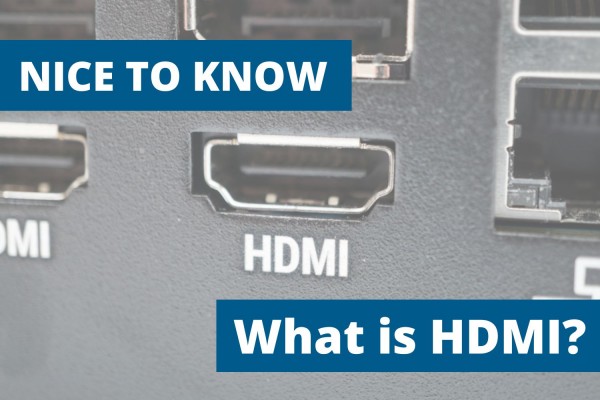The short term HDMI stands for High Definition Multimedia Interface. As well as DisplayPort, and as the name suggests, it stands for an interface for the digital transmission of high-definition video and audio signals.
##Nice to know: What is DisplayPort?
Applications of HDMI
HDMI is mostly used to connect devices in the consumer field and for domestic electronics, for instance to connect DVD players, laptops or computers with TVs or monitors.
HDMI Out and HDMI In
Even if they look the same, a distinction is made between HDMI output and HDMI input. The HDMI output is the port at the device that transmits the content. (e.g. computer, console, etc.)
The HDMI In port, however, turns the tables, as the name implies, it is an input, i.e. it is in the device that receives the content. (e.g. monitors)
However, HDMI-in ports can also be found on computers, including our ONE i5. An HDMI-in port on a computer essentially works like an HDMI input on a TV or monitor, with the difference that it can receive contents from external devices such as game consoles, Blu-ray players or video cameras.
Which versions does HDMI have?
To keep pace with the constantly progressing technology, HDMI was developed further and further. The different specifications, which by now sum up to 13 in total, confused a lot of customers over years. We also want to keep it short, that’s why we only want to mention the most important updated of the interface:
- The first HDMI standard 1.0 was released in 2002 and provides a data rate of 4.95 Gigabit/s and a maximum resolutions of 1920 x 1080 pixels.
- By introducing the version 1.3 in 2006 the resolution increased to 1560 x 1440 pixels. Furthermore, with this specification a new type of plug was released: HDMI type C.
- The next major update was version 1.4 in 2009, with an increase of the resolution to 3840 x 2160, i.e. 4K, pixels.
- The latest version is HDMI 2.1, which was released in 2017 and has a resolution of 7680 × 4320p @ 60 Hz, i.e. 8K.
What do the names for HDMI cables mean?
To ensure a clear and understandable labeling of the cables, they are no longer labeled with the version number (1.0, 1.4, etc.), but with the names for their speed class:
- HDMI Standard: The data rate of up to 2.25 Gbit/s ensures an image resolution of 720p or 1080i @ 60 Hz. It supports the versions up to 1.3.
- HDMI High Speed: Resolution of 2160p @ 30 Hz. Supports all versions up to 1.4.
- HDMI Premium High Speed: Resolution of 4096p @ 60 Hz. Supports versions up to 2.0.
- HDMI Ultra High Speed: Resolution up to 8K@60Hz. Supports all versions up to 2.1.
Benefits of HDMI
By using HDMI, image and audio can be transmitted with only one cable, which really simplifies the connection of AV devices. Furthermore, like that, another connector is redundant, which helps especially small devices such as our Mini-PCs. In addition, HDMI provides a phenomenal quality, transfers 8K and 3D content and supports Surround-Sound.









